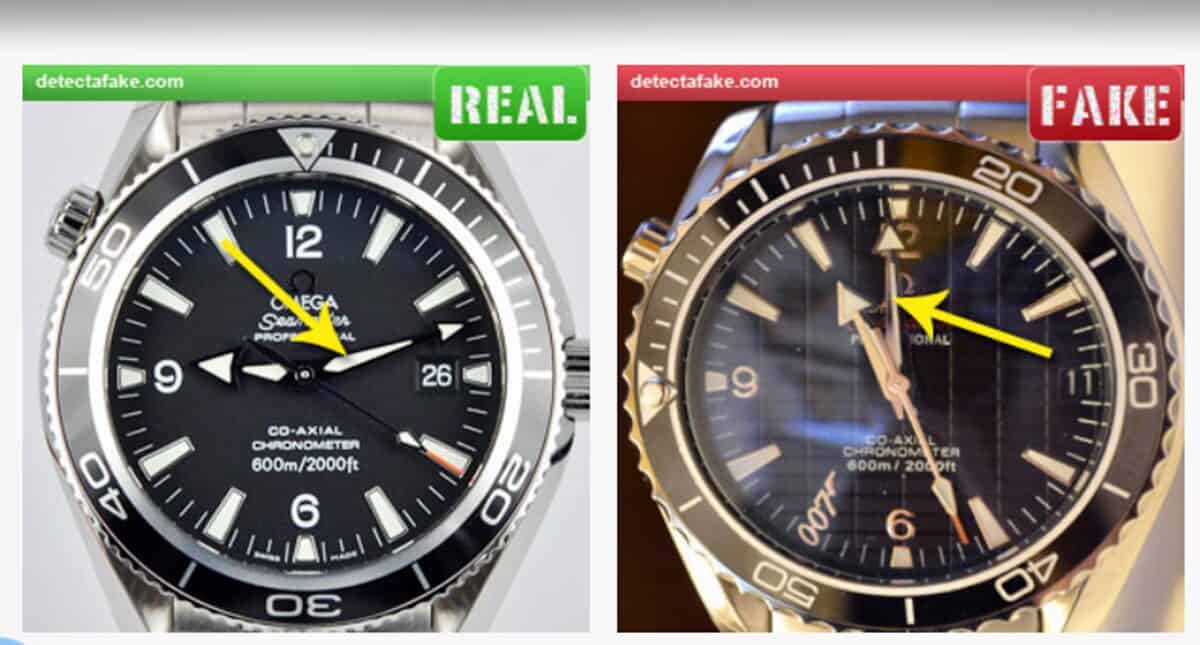How to detect fake Omega Seamaster Watches
| Step | Aspect to Check | Real Omega | Fake Omega |
|---|---|---|---|
| 1 | Overall Quality | Flawless, no alignment issues or misspellings | Flaws, alignment problems, or misspellings |
| 2 | Helium Escape Valve Position | Just above the 10:00 position | Just below the 10:00 position |
| 3 | Lume Area of Hands | Nearly entire width on the real one | Thin line on the fake |
| 4 | Bezel Luminous Dot Position | Centered inside the triangle | Off-centered |
| 5 | Date Display | Centered numbers in the window | Off-centered or odd-sized numbers on fakes |
| 6 | Stem Adjustment | Second hand stops on a real one | Continuous movement on many fakes |
| 7 | Logo on Dial | Applied and separate piece of metal | Painted or printed on the dial |
| 8 | Luminosity After Charging | Clear and bright lumes | Dim or barely visible lumes on the fake |
| 9 | Second Hand Motion | Continuous motion with several steps per second | Jerky, one-second steps on fake |
| 10 | Omega Stamp Inside | Genuine Omega stamped with the name | Absence of Omega stamp may indicate a fake |
How to detect fake Omega Seamaster Watches: Welcome to the world of Omega Seamaster watches, a brand synonymous with precision and excellence. However, with great popularity comes the unfortunate influx of replicas. Don’t worry; we’re here to guide you through a step-by-step process to authenticate your Omega timepiece. By the end, you’ll be equipped with the knowledge to distinguish between an authentic Omega and a counterfeit.
1. Overall Quality Check: Begin your authentication journey with a thorough visual examination. A genuine Omega exudes perfection – no flaws, alignment issues, or misspellings. Think of it as scrutinizing a masterpiece; every detail should be impeccable.
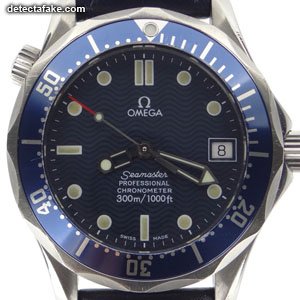
Example: Consider a real Omega as a finely crafted painting with every stroke in place, while a fake might resemble a rushed, poorly executed sketch.
2. Helium Escape Valve Position: Move your attention to the helium escape valve, a distinctive feature of many Omega Seamaster models. On the genuine watch, it sits just above the 10:00 position, forming a seamless alignment.

Example: Imagine drawing a line from the watch’s center through the 10:00 position – the valve on a real Omega sits elegantly just above, like a perfectly orchestrated dance move.
3. Lume Area of Hands: Now, focus on the lume area of the hands. Authentic Omegas boast luminous hands that nearly span the entire width, ensuring optimal visibility in various lighting conditions.

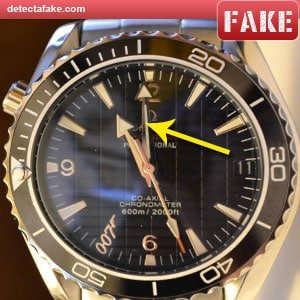
Example: Think of the lume as the bright headlights on a real Omega, illuminating the path, while on a fake, it’s akin to a dim flashlight struggling to light up the surroundings.
4. Bezel Luminous Dot Position: Direct your attention to the luminous dot on the bezel. A genuine Omega showcases precise craftsmanship, with the dot perfectly centered inside the triangle.
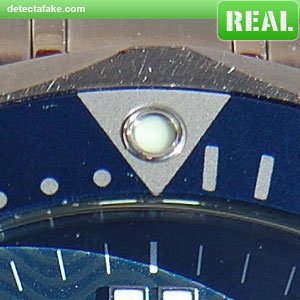

Example: Picture a real Omega’s bezel dot as the North Star guiding sailors; any deviation from center indicates a forgery, like a compass needle gone astray.
5. Date Display: For models with a date display, scrutinize the numbers. Genuine Omegas present centered digits in the window, maintaining consistency across all numerals.


Example: Authentic Omega dates are like well-organized bookshelves; each digit is centered and harmoniously placed, while fakes resemble a haphazardly arranged collection.
Step 6: Second Hand Movement Analysis

When adjusting the time on a genuine Omega, the second hand should stop to facilitate accurate time setting. Counterfeit watches often lack this feature.
Step 7: Logo on Dial Verification
Authentic Omega watches have an applied logo, a separate metal piece on the dial. Counterfeits may feature a painted logo integrated into the dial.
Step 8: Luminosity Testing
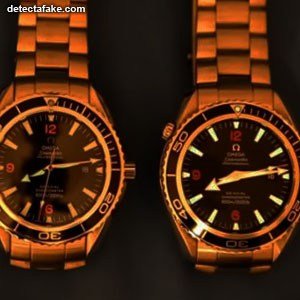
Charge your watch by placing it in front of light for 15 seconds, then move to a dark place. Authentic Omegas will display bright lumes, while counterfeits may have dim or barely visible ones.
Step 9: Second Hand Motion Assessment
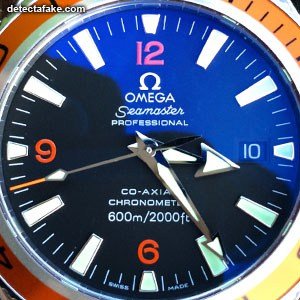
Observe the motion of the second hand. Authentic Omega watches exhibit a smooth, continuous movement with several steps per second. Counterfeits may move in one-second steps.
Step 10: Internal Stamping Confirmation
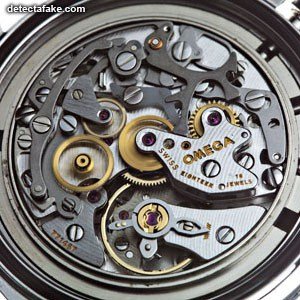
For a final check, authentic Omega watches are stamped with the brand’s name on the inside. While it’s advisable to have a professional verify this, it’s a crucial indicator of authenticity.
FAQs:
-
How can I tell if my Omega watch is real?
- Refer to the overall quality check, ensuring flawless craftsmanship without any flaws or misspellings.
-
Why is the helium escape valve position crucial in authentication?
- The helium escape valve should be just above the 10:00 position, forming a distinctive alignment. Deviation may indicate a counterfeit.
-
What should I look for in the lume area of the hands?
- Genuine Omegas have luminous hands that almost entirely span the width, providing optimal visibility. Fakes may have thin, less visible lume areas.
-
How does the date display help in identifying a fake Omega?
- Check for centered numbers in the date window, especially in single digits. Off-centered or odd-sized numbers may suggest a counterfeit.
-
Is the Omega stamp inside the watch a reliable authentication factor?
- Absolutely. A genuine Omega will have its name stamped inside, indicating authenticity. Lack of this stamp may raise suspicions of a fake.
